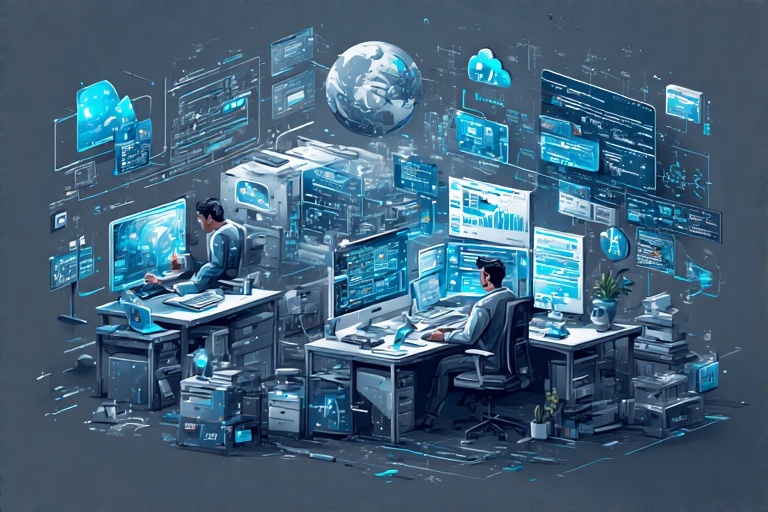As applications grow more sophisticated and user expectations skyrocket, teams must knit together frontend, backend and infrastructure pipelines into a seamless delivery engine. In 2025, accelerating time-to-market no longer means cutting quality corners—it means collapsing silos, automating end-to-end flows and embedding feedback loops from code check-in to production. This article examines the patterns, tools and cultural shifts that enable development, operations and platform engineering groups to move from isolated tasks to unified “code-to-cloud” workflows.
1. The Changing Shape of Web Development
Five years ago, a monolithic Rails app and a handful of scripts might have served a small team. Today, modern products often combine:
- Single-Page Apps or server-rendered UIs built on React, SvelteKit or Astro
- API layers (GraphQL, REST or gRPC) feeding microservices in Node.js, Go or Rust
- Event-driven backends powered by Kafka, RabbitMQ or serverless functions
- Multi-tenant infrastructure spanning Kubernetes clusters, edge nodes and managed PaaS
This distributed architecture demands tight coordination: changes in a UI component can break a downstream service, and a misconfigured container image can skew resource usage in production. Traditional handoffs no longer scale.
2. API-First and Contract-Driven Development
Defining clear contracts before writing a single line of code lets frontend and backend teams advance in parallel. Key practices include:
- Schema-driven mocks: Tools like Prism or Mockoon ingest OpenAPI or GraphQL schemas to simulate endpoints.
- Contract tests: Pact or Postman tests verify that services adhere to agreed request-response shapes.
- Versioning strategy: Semantic API versioning and “canary” rollover allow multiple client versions to coexist safely.
By shifting integration verification left, teams avoid late-stage surprises and accelerate feature delivery.
3. Unified CI/CD: One Pipeline to Rule Them All
In 2025, continuous integration and deployment pipelines are no longer a patchwork of scripts. Leading teams employ:
- Monorepos with dynamic dispatch: Nx, Turborepo or Git subtrees foster code sharing and parallel builds.
- YAML-driven workflows: GitHub Actions, GitLab CI/CD or Azure Pipelines orchestrate linting, unit tests, snapshot tests and container builds in distinct stages.
- Trunk-based development: Feature toggles and short-lived branches reduce merge conflicts and streamline merges into mainline.
- Automated releases: Argo CD or Flux detect Git pushes and sync live clusters, while Helm charts or CDK deploy infra changes.
These unified pipelines shrink feedback loops—developers see test failures in seconds, not hours.
4. Infrastructure as Code and GitOps
Managing infrastructure alongside application code ensures environments remain reproducible and auditable. In practice:
- Declarative stacks: Terraform and Pulumi codify cloud resources—networks, IAM roles, managed databases.
- GitOps operators: Flux, Argo or Jenkins X watch for manifest updates and reconcile cluster state automatically.
- Environment tiers: Preview environments spin up on pull requests, QA clusters update on merge-to-dev, and production follows controlled release schedules.
Teams gain confidence that “infrastructure drift” becomes a thing of the past.
5. Observability and SRE Practices
Deploying code at high velocity demands robust monitoring and reliability engineering:
- Distributed tracing: OpenTelemetry traces span browser, API gateway and microservice hops, revealing latency hotspots.
- Unified dashboards: Grafana or Datadog combine frontend error rates, backend throughput and infrastructure metrics in one pane.
- Alerting and runbooks: Paging policies and incident playbooks ensure rapid recovery, while postmortems drive continuous improvement.
By embedding observability from day one, teams shorten downtime and accelerate root-cause analysis.
6. AI-Augmented Development
Generative AI assistants and DevSecOps bots are now integral to code-to-cloud workflows:
- AI-powered code suggestions: Copilot, Tabnine and CodeWhisperer speed boilerplate creation and documentation tasks.
- Automated PR reviews: SonarQube, Snyk or DeepSource bots flag security flaws, style violations and performance anti-patterns.
- ChatOps workflows: Slack or Teams integrations let developers query deployment status, roll back releases and run smoke tests without leaving their chat client.
These productivity gains free engineers to focus on high-value design and architecture work.
7. Cultural Enablers and Self-Service Platforms
Even the best tooling falters without the right culture. High-velocity teams invest in:
- Internal developer portals: Backstage or custom platforms expose APIs, CLI commands and runbook links in a single UX.
- Cross-functional squads: Embedded DevOps liaisons and rotating on-call shifts build empathy across specialties.
- Continuous learning: Regular “lunch and learn” sessions, hack days and shared retrospectives keep best practices top of mind.
By democratizing access to infrastructure and patterns, organizations scale without adding bottlenecks.
8. Let Me Show You Some Examples
- Streaming Service: UI developers pushed a new video-player component built against a mocked GraphQL schema. Backend engineers committed resolver implementations days later, and Argo CD auto-deployed changes to a canary cluster for safety testing.
- E-Commerce Site: A unified CI pipeline linted React code, ran Jest unit tests, executed contract tests via Pact, built Docker images and published them to ECR—all in under three minutes.
- Enterprise SaaS: Infrastructure changes tracked as code in a Terraform monorepo triggered automated mid-day smoke tests in a staging cluster. Observability alerts on increased request latency kicked off a rollback procedure orchestrated through Slack commands.
Conclusion
In 2025, streamlining “code to cloud” means collapsing boundaries between frontend, backend and DevOps into a continuous feedback loop. By adopting API-first design, unified CI/CD, GitOps, observability and AI-augmented tools—backed by a culture of shared ownership—teams can deliver new features securely, reliably and at scale. As complexity grows, these integrated workflows become the foundation of resilient, innovative software delivery.







Add a Comment